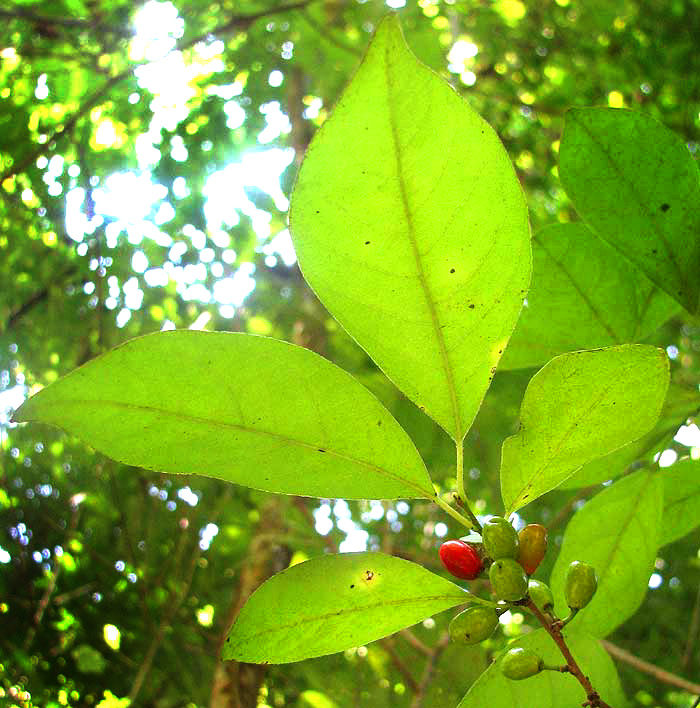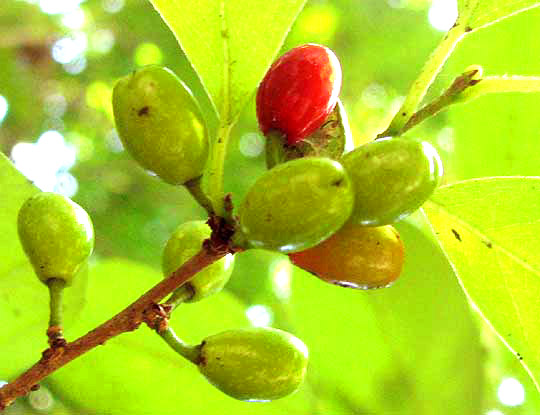Excerpts from Jim Conrad's
Naturalist Newsletter

from the the August 5, 2012 Newsletter issued from the woods of the Loess Hill Region a few miles east of Natchez, Mississippi, USA
SPICEBUSH'S RED DRUPES
In the understory of a valley-bottom forest's deep shade I was surrounded by such dim greenness that it was like being a fish in an alga-chocked aquarium. But then a pinpoint of shining scarlet caught my eye, at eye level, on the slender branches of a nearby understory bush. You can see exactly what I saw above. A close-up of the red fruits -- drupes because they are fleshy, contain single seeds and doen't split at maturity -- is shown below:

This is an old friend from Kentucky where it's much more common than in these parts. Here it's only spotty in rich-soiled little coves well protected from the elements, but up there it's fairly common in bottomland woods and lower slopes. This is the Spicebush, LINDERA BENZOIN, on fieldtrips always easy to remember for students just learning their local flora, because its leaves and stems smell so wonderfully spicy. People love to chew on the stems for the clean-mouth feeling. In very early spring before its leaves appear the head-high bush may erupt with many bright yellow flowers, and in the fall and winter the branches of female plants -- the plants are "dioecious" -- may bear clusters of very red fruits.
I was surprised, however, to see fruits turning red this early in the season. I think of the fruits as adorning the bush after the leaves already have fallen off, deep in the winter. But our pictures were taken the last week of July! Well, this year because of a mild winter and warm spring, everything seems two or three weeks advanced.
There's no surprise that the Spicebush should be so spicy. It's a member of the Laurel Family, which is famous for harboring species with aromatic foliage. Besides the bay-leaf-producing Laurel itself, other members of the mostly tropical Laurel Family include the Avocado, Camphor Tree, Cinnamon Tree, and our own similarly fragrant, Temperate Zone Sassafras. The fragrance is produced by aromatic "essential oils" in the plants' vegetative parts. An oil is "essential" merely in the sense that it carries a plant's distinctive scent, or essence. And once you smell the Spicebush's distinctive spicy odor, you'll understand how essential it is.
Spicebushes are widely distributed in eastern North America from Maine and Ontario to Kansas south to Texas and northern Florida.